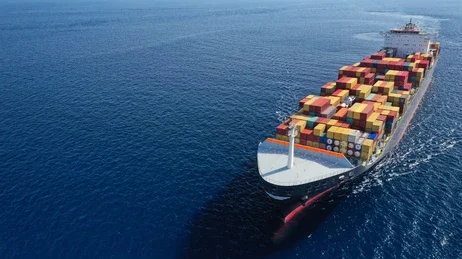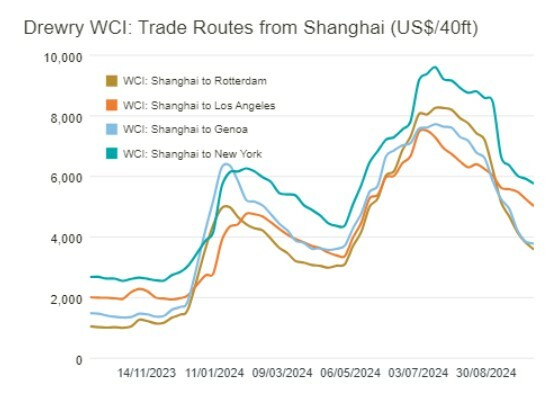
Asia-US container rates fall further; trend expected to continue post-ILA strike
HOUSTON : Rates for shipping containers from east Asia and China to the US continued to fall after a lengthy strike was averted at US Gulf and East Coast ports and as peak season volumes have largely been pulled forward.
The International Longshoremen’s Association (ILA) strike lasted just three days, and market analysts expect backlogs created by the work stoppage to be cleared up in two to three weeks, or even less at the Port of New York/New Jersey.
Some ports extended gate hours to allow more time for containers to be delivered or picked up.

Nathan Strang, the US Southwest director of ocean freight for Flexport, said the company is seeing relatively fluid terminal operations and railroad operations.
Strang said all detentions and demurrage rules from the Federal Maritime Commission (FMC) remain in effect but noted that time frames for detention and demurrage restarted on 7 October after the strike ended.
CONTAINER RATES FALL
Global average rates for shipping containers continued to fall, according to multiple analysts.
Supply chain advisors Drewry has its World Container Index (WCI) at $3,349/FEU (40-foot equivalent unit), which is down by 4% and shown in the following chart.
Drewry said Shanghai to Los Angeles container rates fell by 5%, and Shanghai to New York rates fell by 3%, as shown in the following chart.

Following the tentative deal between the ILA and the ports, Drewry expects rates ex-China to continue to decrease marginally in the coming weeks.
Online freight shipping marketplace and platform provider Freightos said rates fell by a larger degree, but its rates had been higher.
Judah Levine, Head of research at Freightos, said carriers are also planning to reduce deployed capacity on the transatlantic trade lane later in the month in the hope of preventing rates from falling back to the $1,600-1,800/FEU level they had maintained for much of the year.
“With the strike over and peak season demand largely behind us from a significant pull forward of volumes in the last couple months, transpacific container rates should continue to ease on the seasonal lull in volumes between peak season and Lunar New Year,” Levine said.
Container ships and costs for shipping containers are relevant to the chemical industry because while most chemicals are liquids and are shipped in tankers, container ships transport polymers, such as polyethylene (PE) and polypropylene (PP), are shipped in pellets.
They also transport liquid chemicals in isotanks.
LIQUID TANKER RATES UNCHANGED
US chemical tanker freight rates held steady again this week for most trade lanes, even though vessel demand is growing for some routes.
Most rates from the major chemical hubs remain sideways as a good portion of the market were attending the European Petrochemical Association (EPCA) conference in Berlin.
The USG to Asia lane was also quiet following holidays.
Although it is likely that increased exports ex–USG will be seen going into Europe and Asia, primarily as clean petroleum products (CPP) tonnage continues to focus on alternative cargoes in the petrochemical space, thereby adding to spot availability, which is already well supplied.
On the transatlantic front, the eastbound leg is expected to warm up with cargoes being quoted including styrene to ARA from several US Gulf ports.
Source : ICIS
